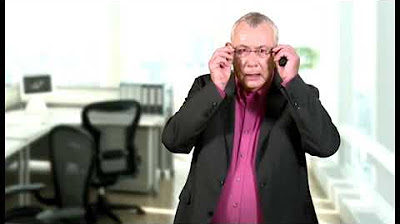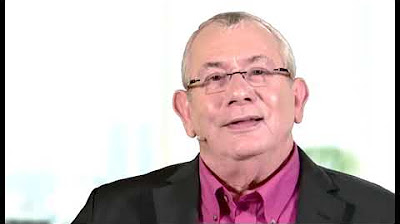Brilliant Customer Service - How to Impress your Customers! - Chapter 5
Summary
TLDRIn Chapter Five of 'Brilliant Customer Service,' Tony Hunt emphasizes the importance of implementing a CRM system to enhance team collaboration and customer service. He advocates for a shift from 'ducks' to 'eagles,' symbolizing a proactive approach to customer care. The chapter introduces the 7S framework centered on shared values, suggesting an organizational structure that prioritizes customer satisfaction. Hunt discusses the need for change management, empowering customer service representatives as independent business units, and the significance of a supportive company culture. He provides practical tips for adopting a CRM system, including organizational restructuring, championing customer-focused behaviors, and leveraging existing tools like Microsoft Outlook for small businesses.
Takeaways
- 📝 The importance of implementing a CRM system is emphasized to enhance idea sharing and collaboration among teams and customer service representatives.
- 🦅 A quote by Ken Blanchard differentiates between 'Ducks' who follow orders and 'Eagles' who take a broader perspective to serve customers better, advocating for the latter approach.
- 🏛 The '7S Framework' is introduced as a method for CRM work, focusing on shared values that guide organizational structure, systems, behavior, staff development, skills, and strategy.
- 🤝 Shared values within an organization should be clearly defined and communicated to everyone involved to ensure a unified approach to customer service.
- 🛂 The script suggests considering a change in organizational structure, such as the Nordstrom inverted pyramid, to prioritize customers and support staff.
- 🌟 Empowerment of customer service representatives to act as independent business units is discussed, requiring a shift in management style and company culture.
- 🔍 The necessity of change management for excellent customer service is highlighted, noting that it's not a natural process but requires deliberate facilitation.
- 🏅 Tips for structuring teams, setting goals, celebrating successes, and rewarding soft skills in customer service are provided to encourage a customer-centric culture.
- 💼 The script advises considering organizational structure when choosing a CRM system and involving CRM teams in strategic planning to ensure the system meets their needs.
- 💡 For small businesses, simple adaptations like using Microsoft Outlook for CRM can be effective, emphasizing the importance of starting with the soft elements before implementing technology.
Q & A
What is the main focus of chapter five in the 'Brilliant Customer Service' program?
-The main focus of chapter five is the installation of a Customer Relationship Management (CRM) system to assist in organizing and sharing ideas with teams and customer service representatives.
What does Ken Blanchard's quotation about ducks and eagles signify in the context of customer service?
-The quotation signifies the importance of adopting a proactive and strategic approach to customer service, like eagles, rather than being reactive and rule-bound, like ducks.
What is the 7S framework mentioned in the script, and how does it relate to CRM work?
-The 7S framework is a model for organizational structure that includes shared values, structure, systems, shared values, style, staff, and skills. It relates to CRM work by providing a foundation for how an organization operates and aligns its values and strategies with customer service.
Why is it important for an organization to define and share its shared values before implementing a CRM system?
-Defining and sharing shared values ensures that all participants in the organization understand and represent the same customer-centric philosophy, which is crucial for the successful implementation and use of a CRM system.
How does the script suggest changing the organizational structure to prioritize customer service?
-The script suggests changing the organizational structure by either using the Nordstrom inverted pyramid model, which puts customers at the top, or by creating a non-hierarchical structure with the customer at the center, surrounded by various business units.
What does the script mean by 'empowering' customer service representatives?
-Empowering customer service representatives means giving them the autonomy and authority to make decisions and take actions needed to satisfy customer needs without constant supervision or approval from higher-ups.
What are some of the tips provided in the script for developing a customer-centric philosophy?
-Some tips include structuring small teams led by champions, setting SMART goals for customer service behaviors, celebrating successes, developing a customer service mantra, and finding tangible ways to reward excellent customer service.
How does the script recommend involving CRM teams in strategic planning?
-The script recommends involving CRM teams in strategic planning by making them a part of the planning process and not imposing decisions from above, allowing them to handle customer feedback and devise alternative approaches.
What advice does the script give for choosing a CRM system that suits an organization's needs?
-The script advises considering the organizational structure, finding customer-friendly champions to lead teams, delegating process elements to CRM teams, and using CRM champions to help choose a system that best suits their needs.
Why is it suggested to develop the 'soft' approach to customer service before implementing a CRM system?
-Developing the 'soft' approach first helps to clarify what the CRM needs will be, allowing the teams to drive the software rather than being forced into certain behaviors by the software.
Outlines

Этот раздел доступен только подписчикам платных тарифов. Пожалуйста, перейдите на платный тариф для доступа.
Перейти на платный тарифMindmap

Этот раздел доступен только подписчикам платных тарифов. Пожалуйста, перейдите на платный тариф для доступа.
Перейти на платный тарифKeywords

Этот раздел доступен только подписчикам платных тарифов. Пожалуйста, перейдите на платный тариф для доступа.
Перейти на платный тарифHighlights

Этот раздел доступен только подписчикам платных тарифов. Пожалуйста, перейдите на платный тариф для доступа.
Перейти на платный тарифTranscripts

Этот раздел доступен только подписчикам платных тарифов. Пожалуйста, перейдите на платный тариф для доступа.
Перейти на платный тарифПосмотреть больше похожих видео

Brilliant Customer Service - How to Impress your Customers! - Chapter 2

Brilliant Customer Service - How to Impress your Customers! - Chapter 3

Brilliant Customer Service - How to Impress your Customers! - Chapter 1

AFTER SALES HOW TO DO IT STEP BY STEP (Practical Summary)

BUSINESS RESULT INTERMEDIATE UNIT 11 "A brainstorming meeting"

Penerapan Customer Relationship Management di Perusahaan
5.0 / 5 (0 votes)
